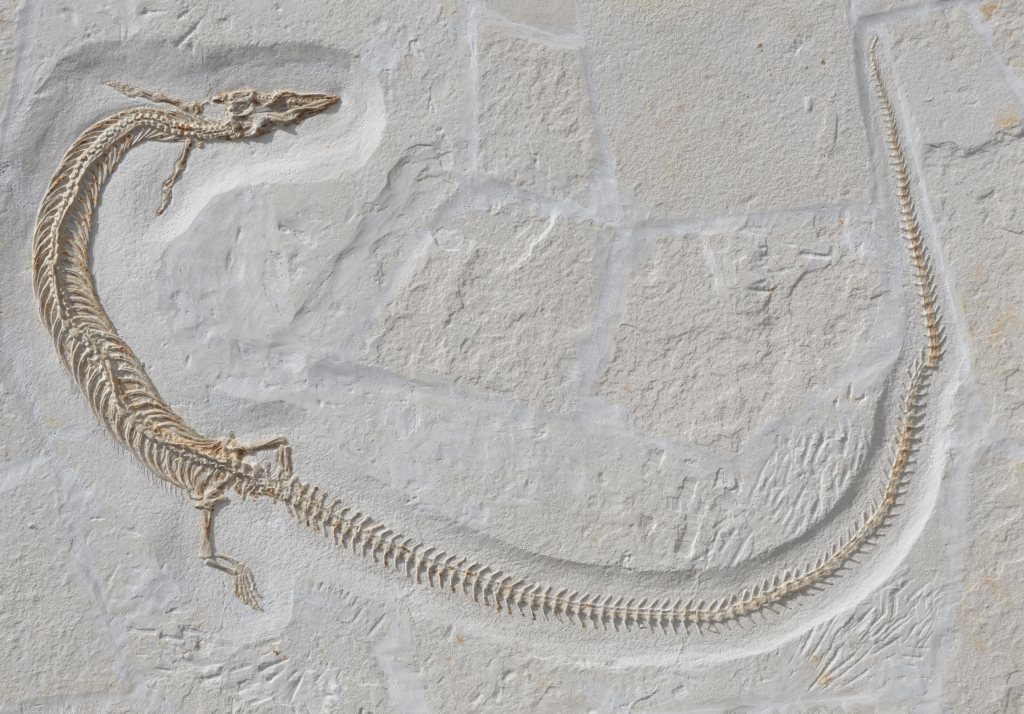September 2024: Aquatic tuatara

Acrosaurus frischmanni von Meyer, 1854
SNSB-BSPG 1953 I 431
Upper Jurassic, ca. 150 million years, Eichstätt, Upper Bavaria
Acrosaurus was a small tuatara from the Upper Jurassic (c. 150 Ma) of southern Germany. Tuataras (Rhynchocephalia) are an old group of scaly crawlers (Lepidosauria) closely related to lizards and snakes. Today they are represented by a single species, the New Zealand tuatara Sphenodon punctatus, which is only found on a few small islands around the North Island of New Zealand. In contrast to Sphenodon, which is a terrestrial omnivore resembling a lizard in body shape, Acrosaurus was marine and hunted for small fish and invertebrates in the subtropical shallow sea that covered large parts of southern Germany at the time. As an adaptation to the aquatic way of life, its body was elongated and legs reduced. The elongation of the body is mainly due to a larger number of vertebrae, especially in the tail, which was effective as a powerful steering organ in these animals.
The body proportions of Acrosaurus, in particular the large skull in relation to the body and the relatively weak ossification of the skeleton of this relatively rare species, have led to these animals often being regarded as juveniles. The famous ‘Solnhofener Plattenkalke’ of southern Germany, which have yielded Acrosaurus, also contains fossils of a second, much larger form of marine tuatara, the genus Pleurosaurus. These animals, up to 1.5 m long, are very similar to Acrosaurus in their body shape, but have a much longer skull. As a relative elongation of the snout is a frequently observed change during the growth of a vertebrate, it was in the past assumed that the animals described as Acrosaurus frischmanni were not actually a separate species, but rather were juvenile individuals of Pleurosaurus. Recently, however, scientists from the Bavarian State Collection of Palaeontology and Geology examined a juvenile specimen clearly belonging to Pleurosaurus, and found that this fossil, in regard to body size, is intermediate between typical representatives of Acrosaurus and adult specimens of that genus. Moreover, the spine of the much smaller Acrosaurus specimens was already much better ossified than that of this Pleurosaurus juvenile. This is evidence that these fossils represent a separate species after all and adds to our understanding of the diversity of tuataras in the Early Jurassic of southern Germany.
Oliver Rauhut, München
Foto: Skeleton of an adult Pleurosaurus, length of the fossil: approx. 1.2 m.



